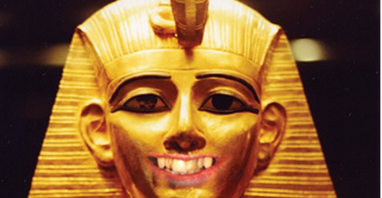I’m willing to posit that over 99% of patients in my New York dental practice use toothpaste. The rest may use other dentifrices, such as baking soda, but most of us are “all in” for the tubes of cleansing agents known as toothpaste. Ever wonder where toothpaste comes from? Who suddenly thought, “Hey, I need something tasty that will clean my teeth”? To answer that question, here’s a short history on the development of toothpaste!
The Ancients Used a Form of Toothpaste
Even prior to the invention of the toothbrush, back in 5000BC, the Egyptians were using a paste to clean their teeth. No, it certainly wasn’t the flavorful paste we use today! More likely it was a combination of burnt eggshells and ox hoof ash, the mixture of which provided both whitening and abrasion. Ancient Greeks and Romans, as well as the wealthy in India and China, are known to have continued the tradition of tooth cleaning via combinations of crushed bone and oyster shells, and/or a mix of bark and powdered charcoal. The Chinese upped the ante to include salt, herbal mints and ginseng, in order to improve the breath.
Known as the world’s oldest recipe for toothpaste, found in the basement of a Viennese museum, is a 4th century (AD) Egyptian document that recommends crushing together one part each rock salt and dried iris flower with two parts of mint and a pinch of pepper for a “powder for white and perfect teeth.”

Toothpaste in the 1800s
As difficult as it is to imagine a mouthful of soap, the early versions of toothpaste in the 1800s did, in fact, include various types of soap, particularly those with ground charcoal, which was readily available at the time. You may be surprised to learn that soap was part of most toothpaste recipes until 1945, when it was replaced with ingredients that made it easier to create a smooth emulsion, such as sodium lauryl sulphate, a product still used today. In the mid-19th century, chalk was added, along with Betel nut, which is still chewed in much of Asia today. Ironically, Betel nut has been discovered to be quite dangerous to ones health!
Toothpastes weren’t originally in paste form, but marketed as powders. The first “creme dentifrice” in a jar was marketed around 1850, followed by the first collapsible tube of toothpaste in 1892. Fluoride toothpaste was introduced in 1914 as a method to prevent cavities.

In the 1950s, companies began marketing toothpastes to prevent or treat specific conditions, such as tooth sensitivity. Over time, to avoid the problems created by aggressive brushing, toothpastes were formulated with lower abrasiveness. Most recently, whitening toothpastes have become enormously popular, as have pastes containing Triclosan, known to lower the risk for plaque, bad breath, gum disease and tooth decay. Triclosan, however, has come under fire (see this Triclosan article in the NYT) as a suspected carcinogen.
Today’s Toothpastes
Internationally, there are nearly 50 brands of toothpaste marketed to consumers today to satisfy the public’s quest for fresh breath and clean teeth. Typically containing flavoring, sweetener, coloring and fluoride, as well as chemicals to maintain a smooth paste, foaming quality and moisture, toothpaste in tubes is used throughout the world.
What’s your favorite toothpaste?

.png?width=800&name=Untitled%20design%20(3).png)

